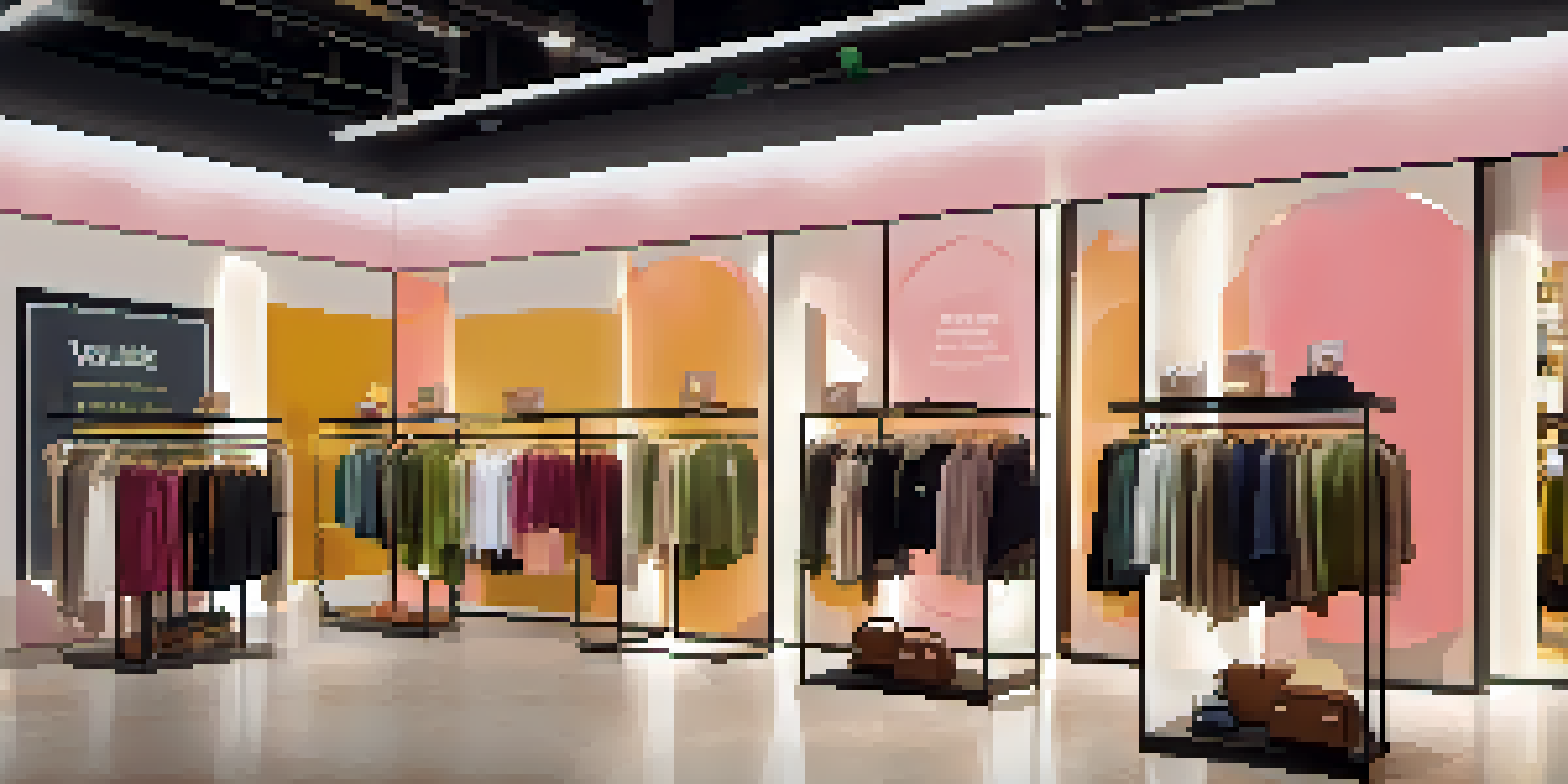Innovative Loyalty Programs to Boost Fashion Brand Engagement

Understanding the Importance of Loyalty Programs
Loyalty programs are essential in today's fashion landscape, acting as a bridge between brands and consumers. They not only reward purchases but also create a sense of community among customers. In a world where options are abundant, a strong loyalty program can help a brand stand out, encouraging repeat business.
Loyalty is not just about rewards; it's about creating an emotional connection with your customers.
By fostering emotional connections, these programs can transform casual shoppers into brand advocates. Think of it as a club where members feel special and valued for their choices. This sense of belonging can significantly enhance a customer’s lifetime value to the brand.
Moreover, effective loyalty programs can provide invaluable insights into consumer behavior. Brands gain access to data that can shape future marketing strategies and product offerings, ensuring they stay relevant and appealing.
Personalized Rewards: Tailoring Experiences
Personalization is the name of the game when it comes to loyalty programs. Instead of a one-size-fits-all approach, brands are now crafting unique reward systems based on individual preferences. Imagine receiving rewards tailored to your style, like exclusive access to new collections or personalized discount codes.

This level of personalization not only enhances customer satisfaction but also drives engagement. When customers feel that their preferences are understood, they are more likely to stay loyal to the brand. For instance, a fashion retailer could analyze past purchases to suggest relevant items, creating a seamless shopping experience.
Loyalty Programs Build Brand Loyalty
Loyalty programs foster emotional connections, transforming casual shoppers into devoted brand advocates.
Additionally, personalized rewards can encourage customers to share their experiences on social media. When shoppers receive something unique or special, they often feel inclined to showcase it, thereby promoting the brand organically.
Gamification: Making Shopping Fun
Gamification is an innovative approach that turns shopping into a game, making the experience enjoyable and engaging. By incorporating elements like points, levels, and challenges, brands can motivate customers to interact more with their products. For example, a brand might create a challenge where customers earn points for trying on clothes or sharing their outfits online.
The best way to predict the future is to create it.
This playful interaction not only boosts engagement but also encourages social sharing, which can enhance brand visibility. Customers love to showcase their achievements, and this can lead to increased word-of-mouth promotion. Think of it as a friendly competition that rewards both shopping and social interaction.
Moreover, gamified loyalty programs often lead to higher spending. When customers are motivated to reach the next level or unlock a special reward, they are likely to spend more, benefiting both them and the brand.
Experiential Rewards: Beyond Discounts
Experiential rewards provide customers with memorable experiences that go beyond traditional discounts. Instead of merely offering money off, brands can invite loyal customers to exclusive fashion shows, private shopping events, or even behind-the-scenes experiences. This personal touch creates lasting memories and strengthens the emotional bond with the brand.
For example, a luxury fashion brand might host an exclusive dinner with the designer for its top-tier loyalty members. Such experiences not only make customers feel valued but also generate buzz and excitement around the brand.
Personalization Enhances Engagement
Tailoring rewards to individual preferences boosts customer satisfaction and encourages brand loyalty.
These unique offerings can lead to increased customer loyalty, as experiences often hold more value than material rewards. When customers feel they are part of something special, they are more likely to remain engaged with the brand.
Integrating Technology: A Seamless Experience
Technology plays a pivotal role in enhancing loyalty programs, making them more accessible and engaging. Mobile apps can streamline the customer experience, allowing users to track their rewards, receive personalized offers, and engage with the brand effortlessly. Imagine having a virtual loyalty card that updates in real-time with points and rewards.
Additionally, integrating technologies like augmented reality (AR) can add a layer of excitement to the shopping experience. Brands can create AR experiences where customers can virtually try on clothes or see how items fit into their wardrobe, all while earning loyalty points.
Furthermore, data analytics can help brands refine their loyalty strategies. By analyzing customer interactions and preferences, brands can tailor their offerings, ensuring they remain relevant and appealing to their audience.
Community Building: Creating a Brand Family
Building a community around a loyalty program can significantly enhance customer engagement. When customers feel they are part of a brand family, they are more likely to stay loyal and advocate for the brand. Brands can foster this sense of community by hosting events, both online and offline, where customers can connect with each other and the brand.
For instance, a fashion brand might create an online forum or social media group where loyal customers can share styling tips and outfit inspiration. This interaction not only strengthens relationships but also allows customers to feel heard and valued.
Community Creates Lasting Bonds
Building a community around a brand enhances customer engagement and strengthens loyalty through shared experiences.
Moreover, community-focused loyalty programs can lead to increased brand loyalty. When customers see themselves as part of a larger group that shares their values and interests, they are more likely to remain engaged and invested in the brand.
Measuring Success: Analyzing Program Effectiveness
To ensure that loyalty programs are effective, brands must measure their success through various metrics. Key performance indicators (KPIs) such as customer retention rates, average order value, and engagement levels provide insights into how well the program is performing. Regular analysis helps brands understand what resonates with their customers.
Additionally, customer feedback plays a crucial role in evaluating loyalty programs. Surveys and feedback forms can uncover areas for improvement and highlight what customers appreciate most. By listening to their audience, brands can adapt their strategies to better meet customer needs.

Ultimately, a successful loyalty program is one that evolves alongside its customers. By continuously analyzing and refining their approach, brands can ensure they remain relevant and engaging in a fast-paced fashion world.